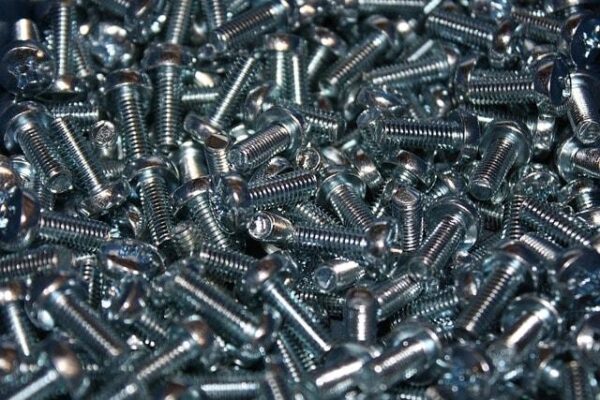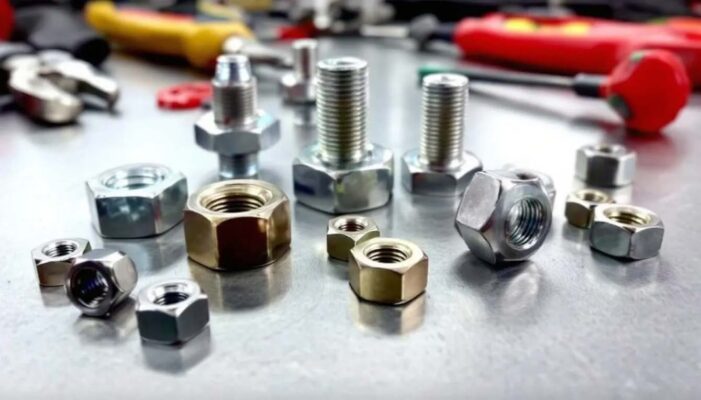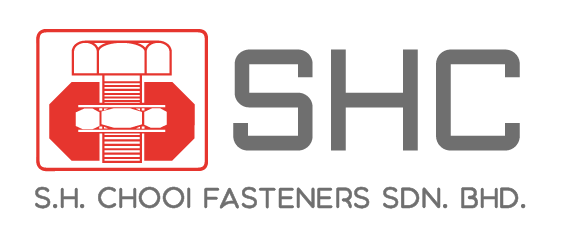Uncategorized
Screw Heads and Drives: Complete Guide to Fastener Types and Applications
Selecting the right fastener for your project involves far more than picking the correct length and diameter. The screw head design and drive system you choose can determine whether your finished project looks professional, performs reliably, and stands the test of time. From the flush-mounted elegance of countersunk heads to the high-torque capabilities of hex socket drives, understanding these critical components will transform how you approach fastening challenges.
Wooden screws were commonly used in the 1st century BC for applications such as olive oil and winemaking presses, demonstrating the ancient origins and early technological significance of screw technology.
Key features of screw heads and drives—such as combined drive styles, tamper-resistant shapes, and self-tapping capabilities—directly impact usability, security, and performance, making it essential to consider these features when selecting the right fastener.
This comprehensive guide examines the complete spectrum of screw heads and drives available today, helping you make informed decisions for everything from delicate electronics assembly to heavy construction applications. Whether you’re a seasoned contractor, manufacturing professional, or dedicated DIY enthusiast, mastering these fastener fundamentals will elevate the quality and durability of your work.
Australia also played a significant role in the history of screw manufacturing, with the establishment of screw factories and innovations in production processes during the 19th century contributing to the advancement of the industry.

Understanding Screw Head Types
The foundation of proper fastener selection begins with understanding how different screw head configurations affect both function and appearance. There are many kinds of screw head types, each suited to different functions and appearances. Screw heads fall into two primary categories that fundamentally change how they interact with your material and project requirements.
Countersunk vs Non-Countersunk Designs
Countersunk head designs, including flat, oval, and bugle heads, are engineered to sit flush with or below the material surface. This creates a smooth, professional finish that eliminates snagging risks and provides clean lines essential for cabinetry, furniture, and finished woodwork. The flat head screw remains the most widely used option in this category, particularly in applications where appearance matters most. For example, flat head wood screws are commonly used in furniture assembly to ensure the screw sits flush with the surface.
Non-countersunk heads, such as pan, button, hex, and truss varieties, remain above the surface by design. While this might seem like a disadvantage, these configurations often provide superior load-bearing characteristics and easier removal access. The raised profile can actually be beneficial in many applications where the screw head needs to be easily identified or accessed for maintenance.
Functional Differences Between Head Types
Flat head screws dominate woodworking applications where a flush finish is paramount. When properly countersunk, they create an virtually invisible fastening point that maintains the material’s aesthetic integrity. However, achieving this requires precise countersinking depth – too shallow and the head protrudes, too deep and you weaken the material. Additionally, using the wrong driver or improper countersinking can cause the tool to slip during installation, potentially damaging the screw or workpiece.
Oval head screws offer a compromise between flat heads and raised designs. With their slightly rounded top surface, they provide some decorative appeal while still allowing partial countersinking. This makes them commonly found in applications where some visual interest is desired without sacrificing the clean lines of flush mounting.
Bugle head screws, predominantly used in drywall applications, feature a curved taper that distributes bearing stress more evenly across softer materials. This design minimizes damage during installation and creates a smooth transition that’s easily concealed with compound and paint.
Non-Countersunk Options
Pan head screws provide one of the most versatile options for general-purpose fastening. Their low, rounded profile offers substantial bearing surface while maintaining a relatively unobtrusive appearance. These screws are commonly found in electronics, appliances, and metalwork where functionality takes precedence over complete concealment.
Button head screws feature an aesthetically pleasing, wide dome profile that makes them ideal for visible applications. The large bearing surface distributes load effectively while the smooth, rounded form provides an attractive finish that works well in decorative or exposed fastening situations.
Truss head screws excel when working with soft or thin materials thanks to their extra-wide bearing surface. This expanded contact area prevents pull-through in materials like plastic, thin metal, or composite panels. The slightly rounded profile also provides clearance advantages in certain assembly configurations.
Hex cap screws stand apart with their external hexagonal heads designed for wrench or socket tool engagement. When you install hex cap screws, it is important to use the correct tool to ensure proper engagement and prevent damage to the screw or workpiece. These fasteners excel in high-torque applications where substantial clamping force is required, making them standard in machinery assembly, structural connections, and automotive applications.
Drive System Classifications
The drive system represents the critical interface between your screw and installation tool, directly affecting torque transmission, installation speed, and long-term reliability. The drive system connects the installation tool to the screw, enabling efficient torque transfer and ease of use. A common method for classifying and identifying different screw drive systems involves analyzing the shape, engagement style, and intended application of each drive type. The adoption of various drive systems was driven by the needs of factories for efficient and reliable assembly processes. Understanding these systems helps you match the right combination of performance characteristics to your specific application needs.
Common Drive Types and Tool Requirements
Slotted drives represent the earliest screw drive development, dating back to the 19th century when manufactured screws first became widely available. While simple in concept, requiring only a flat-blade screwdriver, they suffer from significant limitations in torque transmission and are prone to cam-out under moderate loads. Despite these drawbacks, slotted drives remain useful for light-duty applications and situations where tool availability is limited.
Phillips drives were developed to address the shortcomings of slotted systems, incorporating a cruciform recess that allows increased torque application while intentionally camming out to prevent overtightening. This controlled cam-out feature made phillips drives popular in factory assembly lines but can hinder performance in high-torque applications. Phillips sizes are standardized from #0 for miniature applications up to #4 for large construction fasteners, with #1 and #2 being most commonly found in general construction and woodworking. Each phillips drive size is identified by a specific number, which helps ensure proper tool and fastener matching.
Combination drives attempt to provide the best of both worlds by accommodating both slotted and phillips drivers. While this increases tool compatibility, it doesn’t fully address the cam-out limitations inherent in both individual systems. These drives are typically found where maximum tool flexibility is valued over optimal torque transmission.
Advanced Drive Systems


Hex drives, available in both external and internal configurations, represent a significant advancement in torque transmission capabilities. External hex heads, used with wrenches or sockets, provide robust engagement that resists wear even after exposure to harsh conditions. Internal hex drives, commonly called Allen or socket drives, excel in applications requiring high torque with minimal head protrusion.
The metric and imperial sizing standards for hex drives require careful tool selection to ensure proper fit. Using an incorrectly sized tool can damage both the fastener and driver, leading to costly delays and potential safety issues. It is essential to identify the correct drive type and tool size before installation to avoid errors and ensure optimal performance. This makes proper tool identification and maintenance critical for professional applications.
Square drives, also known as Robertson drives, offer excellent cam-out resistance and are particularly popular in canada and other countries where they were established early in the development of modern fastening systems. The square recess provides four distinct bearing surfaces that distribute torque evenly, making these drives highly effective for power tool applications.
Torx drives feature a six-pointed star pattern that maximizes torque transmission while minimizing both cam-out and driver wear. This makes them particularly valuable in automated assembly operations and applications requiring precise torque control. The multiple contact points distribute stress effectively, extending both fastener and tool life.
Torque Transmission and Cam-Out Resistance
Different drive systems vary dramatically in their ability to transmit torque without slipping. Slotted drives transmit the least torque and cam out easily under moderate loads, making them suitable only for light applications. Phillips drives provide moderate torque transmission but their intentional cam-out design limits maximum application force.
Hex socket drives generally provide the highest torque transmission capabilities, particularly in larger sizes. The multiple contact surfaces and robust engagement make them ideal for applications requiring substantial clamping force. However, care must be taken to avoid stripping the socket with excessive force or worn tools.
Torx and square drives offer excellent compromise between high torque capability and cam-out resistance. Their multiple engagement points provide secure tool connection while distributing stress evenly across the drive surfaces. This makes them particularly suitable for production environments where consistent, reliable fastening is essential.
With some exception, most drive systems follow these general trends, but certain specialty fasteners may behave differently due to unique design specifications or operational requirements.
Security and Tamper-Resistant Drives
Security considerations often drive fastener selection in public spaces, sensitive equipment, and infrastructure applications. Security screws are installed using specialized tools to ensure that only authorized personnel can remove or adjust them, enhancing tamper resistance. Specialized drive systems can deter unauthorized access while maintaining functionality for authorized personnel with proper tools.
Specialized Security Drive Types
Square socket drives represent one approach to security fastening, requiring a specialized square driver that differs from standard Robertson tools. These are commonly found in institutional settings where casual tampering must be prevented without completely restricting access.
Pin hex and pin torx drives incorporate a central security pin within otherwise standard hex or torx recesses. This requires specialized drivers with a corresponding hole to accommodate the pin. The security benefit comes from the relative rarity of these specialized tools while maintaining most of the torque transmission benefits of the base drive system.
Spanner drives, also called snake-eye drives, feature two small holes that require a specialized spanner tool for engagement. These drives provide excellent tamper resistance and are commonly found in public restroom fixtures, elevator panels, and other locations where unauthorized removal could create safety or security issues.
For more detailed information on security fastener types and their proper use, refer to manufacturer guidelines or relevant security fastener standards.
One-Way Screw Systems
One-way screws represent an extreme approach to tamper resistance, designed with a slotted recess that only allows tightening in one direction. The slot profile creates an exact change in geometry that prevents reverse rotation with standard tools. These fasteners are typically found in license plates, public signs, and other applications where permanent installation is desired.
Removal of one-way screws generally requires destructive methods or specialized extraction tools, making them highly effective for situations where tampering poses significant cost or safety risks. However, this same characteristic makes maintenance more complex and expensive.

Applications and Cost Considerations
Security drives find their primary applications in public infrastructure, electronics housings, automotive components, and safety-critical systems. The increased cost compared to standard drives is generally justified by the potential losses from unauthorized access, theft, or vandalism.
The specialized tools required for security drives can significantly impact maintenance operations. Organizations must balance the security benefits against the operational complexity and cost of maintaining appropriate tool inventories. Training personnel on proper security drive removal and installation techniques becomes critical for effective implementation.
Common Screw Head Configurations
Understanding how specific head and drive combinations perform in real-world applications helps guide selection for optimal results. The performance of these combinations is also influenced by the forming processes used during manufacturing, as the way the head and drive features are formed can affect strength and durability. Different configurations excel in distinct environments and usage patterns.
Flat Head Applications
Flat head screws with phillips or torx drives dominate furniture assembly and cabinetry work where flush mounting is essential. The combination provides adequate torque transmission for wood fastening while maintaining the clean, finished appearance required in visible applications. Proper countersinking technique becomes critical for achieving professional results.
In metalwork applications, flat head screws often utilize hex socket drives to achieve the higher torque levels required for secure attachment in harder materials. The flush mounting capability makes these combinations valuable in aerospace and precision machinery where surface discontinuities can affect aerodynamics or part function.
Pan Head Applications
Pan head screws offer versatility across numerous applications, from electronics assembly to general construction. Their low profile provides substantial bearing surface while remaining relatively unobtrusive. Phillips drives are commonly paired with pan heads for general applications, while hex socket drives are used where higher torque is required.
The rounded profile of pan heads makes them forgiving in applications where precise alignment isn’t critical. This characteristic, combined with their large bearing surface, makes them popular for attaching components to thin materials where pull-through resistance is important.
High-Torque Applications
Hex cap screws represent the standard for applications requiring maximum torque transmission and clamping force. Their external hex heads accommodate standard wrenches and sockets, making them practical for field installation and maintenance. These fasteners are commonly found in structural steel construction, heavy machinery assembly, and automotive applications.
The robust engagement between hex heads and tools resists wear even in harsh environments. This durability makes hex cap screws particularly valuable in applications where fasteners may need repeated removal and installation over their service life.
Phillips and Combination Drives
The evolution of phillips drive technology illustrates how manufacturing needs drive fastener innovation. Phillips and combination drives are classified by specific numbers that indicate their size and compatibility, ensuring proper fit and performance. These drive types have seen widespread international adoption, with countries like India playing a significant role in both their manufacturing and use across various industries. The Indian workforce, known for language skills in Tamil and other languages, contributes to the global fastener industry’s multicultural landscape. Understanding both the capabilities and limitations of these systems helps optimize their application.
Phillips Drive Evolution
Phillips drives were originally developed to solve production line challenges in early 20th century manufacturing. The cruciform recess allowed faster engagement than slotted drives while the intentional cam-out prevented overtightening that could damage parts or strip threads. This controlled failure mode made phillips drives particularly valuable in high-volume assembly operations.
However, the same cam-out characteristic that benefits production lines can frustrate field applications where maximum torque is needed. The drive tends to cam out precisely when you need the most holding power, leading to stripped recesses and installation difficulties.
Size Standards and Applications
Phillips drive sizes range from #0 for miniature electronics work through #4 for large construction applications. Size #1 drives are commonly found in electronics and light assembly work, while #2 drives dominate general construction and woodworking applications. Proper size matching between fastener and driver is essential for optimal performance and tool life.
The standardization of phillips sizes has created worldwide compatibility, making these drives valuable in international applications where tool availability might be uncertain. Phillips drives are also commonly used with metric screws, ensuring compatibility across different international standards. However, this same ubiquity has led to widespread availability of low-quality drivers that can accelerate wear and reduce performance.
Pozidriv Improvements
Pozidriv drives represent an evolutionary improvement over standard phillips designs, incorporating additional ribs between the cruciform slots to increase torque transmission and reduce cam-out tendency. This design maintains compatibility with phillips drivers while providing enhanced performance characteristics.
European manufacturing has widely adopted pozidriv drives, particularly in applications where the improved torque transmission provides operational benefits. Pozidriv drives are especially prevalent in Europe due to regional manufacturing standards that favor their use. However, the similarity to phillips drives can lead to confusion and improper tool selection, potentially causing damage to either the fastener or driver.
Hex and Socket Drive Systems
Hex drive systems represent some of the most robust and versatile fastening solutions available, offering exceptional torque transmission capabilities across a wide range of applications. For detailed hex and socket drive specifications, visit a reputable site that provides comprehensive standards and classification resources.
Hex Socket Drive Advantages
Hex socket drives, also called allen drives, excel in applications where high torque must be transmitted through a relatively small, unobtrusive head. The internal hex recess allows substantial torque application while maintaining a low head profile that can be easily recessed below the material surface.
These drives are particularly valuable in machinery applications where space constraints limit access but high clamping forces are essential. The hex socket design distributes stress across six surfaces, providing excellent resistance to both cam-out and recess stripping when proper tools are used.
External Hex Applications
External hex heads provide the ultimate in torque transmission capability, limited primarily by the strength of the fastener itself rather than the drive system. The robust engagement with wrenches or sockets makes these fasteners ideal for structural applications, heavy machinery, and situations where substantial clamping force is required.
The accessibility of external hex heads makes them valuable for maintenance applications where fasteners may need repeated removal and installation. Even after corrosion or exposure to harsh conditions, hex heads typically remain serviceable with appropriate tools.
Metric vs Imperial Sizing
Hex drive sizing follows both metric and imperial standards, requiring careful attention to proper tool selection. The choice between metric and imperial sizing often depends on the country where the fastener is being used or manufactured. Using an imperial tool on a metric fastener, or vice versa, can damage both components and create safety hazards. This becomes particularly important in international applications or when working with mixed fastener populations.
The precision required for proper hex tool fit makes quality tools essential for professional applications. Worn or improperly sized tools can round off hex recesses, making removal difficult and potentially requiring destructive extraction methods.
Material and Coating Considerations
The interaction between screw head design and material properties significantly affects both performance and longevity. Choosing the right material and coating not only enhances performance but also delivers excellent value by ensuring cost efficiency and long-term durability. Understanding these relationships helps optimize fastener selection for specific environments and applications.
Coating Adhesion Challenges
Complex head geometries can create challenges for uniform coating application, particularly in recessed drive areas where coating thickness may vary. Sharp transitions between head surfaces and drive recesses can create stress concentration points where coating failure is more likely to occur.
Countersunk heads present particular challenges for coating durability at the interface with the base material. The bearing surface experiences high contact stress during installation, which can damage protective coatings and create initiation points for corrosion. This makes proper coating selection and application technique critical for long-term performance.
Corrosion Resistance Factors
Stainless steel fasteners provide inherent corrosion resistance but may sacrifice some strength compared to coated carbon steel alternatives. The choice between material and coating approaches depends on the specific corrosive environment and required mechanical properties.
Heat treatment processes used to achieve desired strength levels can affect coating adhesion and performance. This requires careful coordination between fastener manufacturing and coating application to ensure optimal results in demanding applications.
Material Selection Impact
Harder fastener materials resist drive wear and cam-out but may be more expensive and difficult to machine. The trade-off between material cost and performance characteristics requires careful consideration of the application’s specific requirements.
Surface treatments such as phosphate, black oxide, or specialized ceramic coatings can enhance performance by improving corrosion resistance, reducing friction, or increasing wear life. However, these treatments add cost and complexity that must be justified by the application requirements.
Selection Guidelines for Applications
Effective fastener selection requires matching head and drive characteristics to specific application requirements. Local standards and practices can influence fastener selection, and locals may have preferences based on regional experience. The choice of fastener is directly connected to the unique needs of each application, ensuring the right fit and function. In some regions, the majority of fastener applications may favor specific head or drive types due to local industry standards. This systematic approach ensures optimal performance while controlling costs. In village or rural settings, fastener needs may differ from those in urban or industrial environments, often requiring different materials or corrosion resistance. Fasteners are also commonly used in the installation of public signs, trains, and other infrastructure, with Chinese manufacturers and standards—including those from China—playing a significant role in the global fastener market.
Environment-Based Selection
Installation environment significantly influences optimal head selection. Flush mounting requirements typically drive selection toward flat or oval heads, while applications involving soft or thin materials often benefit from the wide bearing surfaces of truss or flange heads.
Drive selection should consider both installation requirements and long-term serviceability needs. High-torque applications generally favor hex socket or torx drives, while applications requiring maximum tool compatibility might benefit from phillips or combination drives despite their torque limitations.
Aesthetic Considerations
Visible fasteners require careful attention to head selection for optimal appearance. Button heads provide an attractive, finished appearance for exposed applications, while flat heads offer complete concealment when properly countersunk.
The finish and coating of visible fasteners becomes critical for maintaining appearance over time. Stainless steel or specially coated fasteners may justify their additional cost in applications where appearance degradation would be unacceptable.
Tool Availability and Maintenance
Field applications often require consideration of tool availability and maintenance requirements. While specialized drives may offer performance advantages, their benefits can be negated if proper tools aren’t readily available when needed.
Training requirements for specialized drive systems can impact labor costs and installation quality. Organizations must balance the performance benefits of advanced systems against the complexity they introduce to maintenance operations.
Cost Optimization Strategies
Bulk applications often benefit from standardization on common head and drive combinations to optimize procurement and reduce tool inventory requirements. However, this standardization shouldn’t compromise performance in critical applications where specialized fasteners provide significant benefits.
The total cost of ownership includes not only fastener cost but also installation time, tool requirements, and long-term maintenance considerations. This broader perspective often justifies higher initial costs for fasteners that provide operational benefits throughout their service life.
Conclusion
Mastering screw heads and drives transforms fastener selection from guesswork into informed decision-making that directly impacts project quality and longevity. The wide variety of head types, from flush-mounting flat heads to high-torque hex cap screws, provides solutions for virtually any application when properly matched to requirements.
Drive system selection proves equally critical, with options ranging from simple slotted designs to sophisticated torx and security systems. Understanding the torque transmission capabilities, cam-out resistance, and tool requirements of each system enables optimal performance while avoiding common installation problems.
The investment in understanding these fastener fundamentals pays dividends across all types of projects, from precision electronics assembly to heavy construction. Whether you’re working with wood, metal, plastic, or composite materials, proper screw head and drive selection ensures professional results that stand the test of time.
Take the time to evaluate your specific application requirements against the capabilities outlined in this guide. Consider factors like installation environment, torque requirements, aesthetic needs, and long-term serviceability to select the optimal combination for your project. When in doubt, consult with fastener specialists who can provide application-specific guidance for challenging or critical installations.

